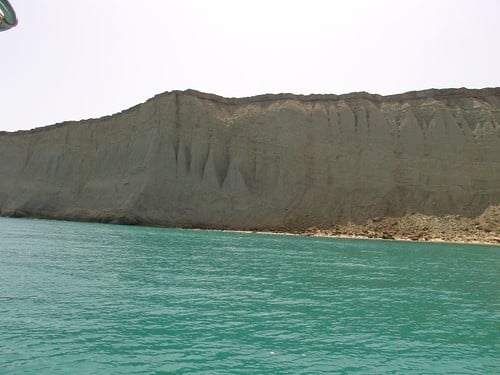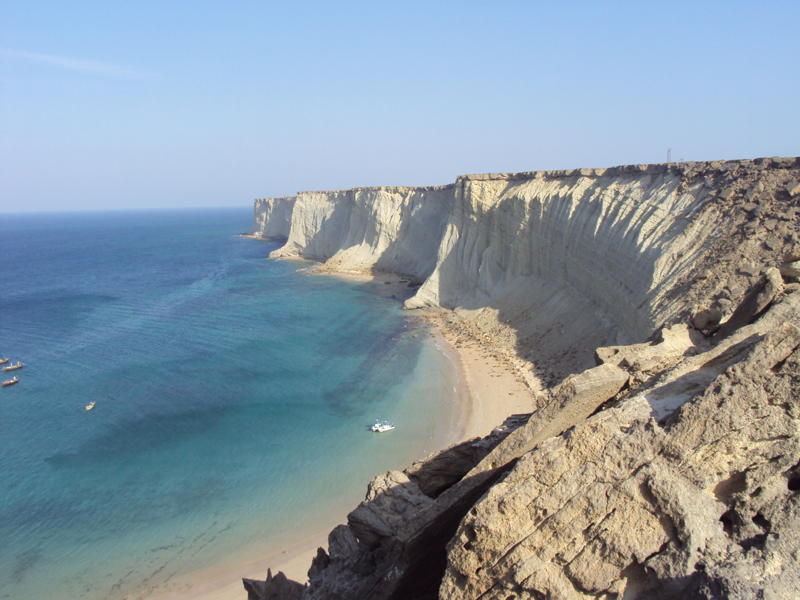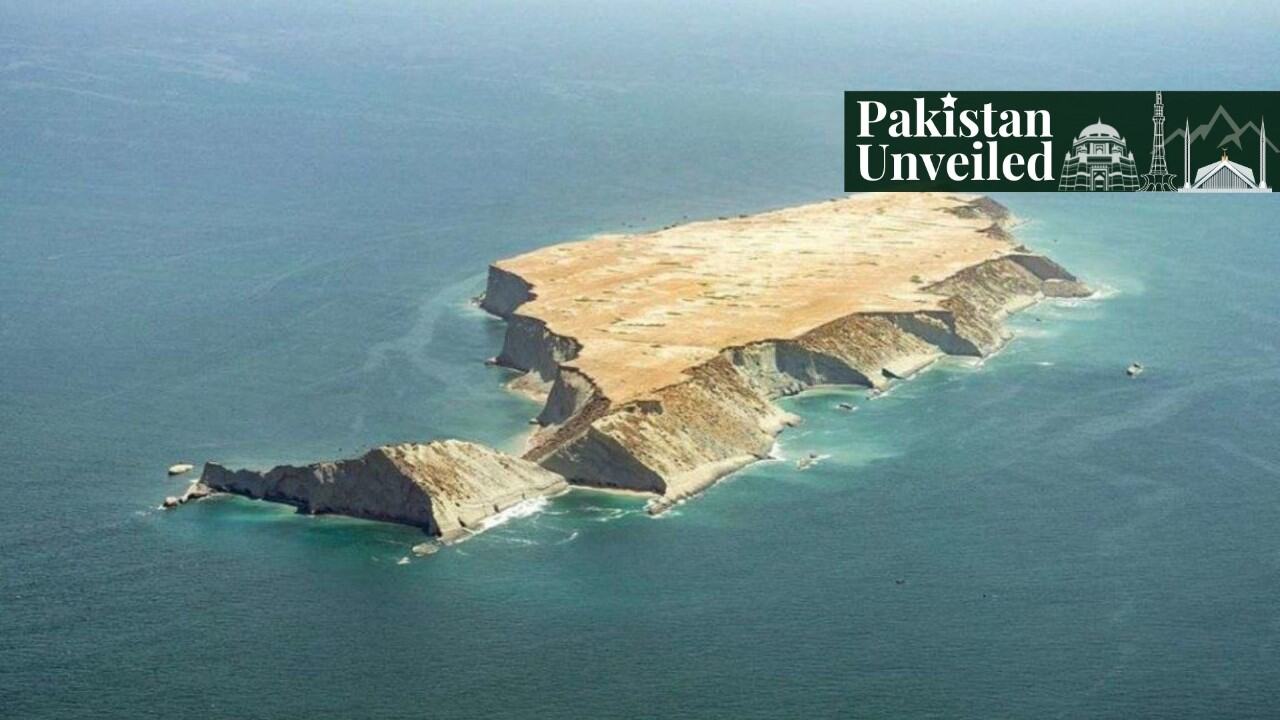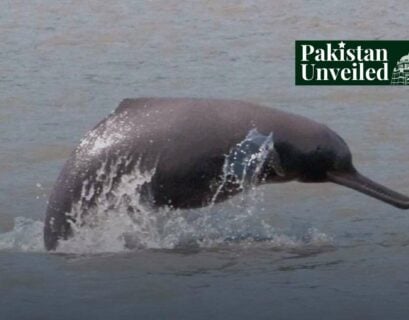Muhammad Abdullah is a law student at the University of London. He holds a profound interest in international relations and current affairs.
The Hidden Island
About 25 km off the Balochistan coast lies a small uninhabited island called Astola Island. Astola is considered the largest offshore island in Pakistan with an area of approximately 6.7 km length and a maximum width of 2.5 km. It is part of the sub-district of Pasni in Gwadar. Locally, it is also known as “Jezira Haft Talar,” which means Island of the Seven Hills. It is called so because of the presence of a series of seven small hillocks on the island and a large, tilted plateau. Astola Island is also known as Jabl-e-Zareen, meaning “beautiful mountain.”
The earliest mention of Astola Island is in Admiral Nearchos’s Arrian account. Admiral Nearchos was a navarch in the army of Alexander, and Alexander had sent Nearchos to explore the coast of the Persian Gulf and the Arabian Sea in 325 BC. The sailors of the fleet were “frightened at the weird stories told about an uninhabited island called Nosala by Arrian.”
Geography & Ecology of Astola Island
Deep crevices and chasms range up to a width of many feet on the hillocks. The north side of the island drops vertically, while the south side gradually slopes downward. Around the periphery of Astola Island, a serene, slender white beach runs along the bank of the blue water. The rocky mountains that stretch across the island shrink inward to make beautiful, secluded cloves.

In addition, there are three more beaches that are found on the island. Moreover, many cave openings are present on it that are proof of the thriving life of crabs and sea urchins. Astola Island has deep turquoise blue water around it that says everything about the rich marine life of the surrounding areas.
The First Marine Protected Area of Pakistan
The island was declared the first “marine protected area” by the government of Pakistan in June 2017. It was done under the international obligations of the federal government under the Aichi Biodiversity Targets and the Convention on Biological Diversity. By declaring it a protected area, it was shown that adequate measures would be taken for the protection, conservation, and restoration of the species, habitats, and ecological processes that may be under threat or severely affected by human activities.
Additionally, the degradation and damage of the land were declared to be controlled by the government. Sanctioned by the World Wide Fund for Nature (WWF), a team of environmental experts investigated the island’s ecosystem and biodiversity. Several areas of the island were checked by the experts, and clear indicators were seen that showed we had been taking care of the hidden island.
Some of the signs of a healthy oceanic ecosystem included rich life thriving near the shore and hundreds of green turtles nesting and laying eggs on the beaches of Astola Island. Right at the foot of the cliffs, the sandy beaches are filled with the nests and eggs of endangered green turtles and hawksbill turtles.
Another one of the important endemic reptiles on the island is the Astola saw-scaled Viper. A large number of waterbirds can also be seen breeding throughout the island. Some of the waterbirds that inhabit Astola are plovers, sanderlings, curlews, gulls, coursers, and godwits. There are several species of dolphins, whales, and other fishes present in the surrounding water of this remote location.
Since there is no source of fresh water, the vegetation on the island is sparse. The only vegetation seen is the presence of large bushes and shrubs that only come to life when it rains heavily on the island. The shrub present in the most considerable quantity on the island is Prosopis julifiora. As the primary source of water is rainfall and soil moisture, there aren’t many plants present there. The island is also inhabited by around 35 species of coral reefs, which spice up the already diverse ecology of the place.
Adventures, Insights & Activities on Astola Island
Astola Island is considered to be a “hard” destination for many eco-travelers because of the absence of lodging facilities on the island. If travelers do consider staying the night, they must bring their own provisions to camp in the area. Some of the most popular activities at Astola are scuba diving, fishing, and camping. Moreover, many travelers go to have a look at turtle breeding as well.

Some of the other activities that travelers may indulge in are canoeing, kayaking, swimming, snorkeling, yachting, pedal boating, and sunbathing. From nearby islands, there are boat transfers as well as helicopter transfers available to Astola Island. However, helicopter transfers may be your only option when there are heavy rains, generally from May to September.
To get around the other islands, boards, and ferries can also be used. However, when you are on Astola Island, there aren’t a lot of options. You can either walk on foot or hire a bicycle. Some cultural footprints are also present on the Island. For example, a mosque dedicated to the Muslim saint, Pir Khawaja Khizr. This mosque was primarily the prayer site for the fishermen who came around during the fishing season.
Hindu Temple on the Island
There are ruins of an ancient Hindu temple present on Astola. The temple was of the Hindu Goddess Kali. To Hindus, the island was known as Satadip. A lighthouse was installed on the island for the purpose of safe passage of vessels by the Government of Pakistan in 1982 which was later replaced by a solar-powered one in 1987.
During the months of May to September, the island becomes a base every year for mainland fishermen. The Pakistani fishermen come during these months to catch oysters and lobsters.
How to Get There
A visit to Astola Island would have you travel from Karachi to Pasni, which typically takes somewhere around seven hours. Pasni is a seaport that is around forty kilometers away from Astola Island, so the journey time consists of an additional five hours to reach the island. You’ll know you have reached the island when you see the solar-powered lighthouse and the small masjid.
Astola Island is Pakistan’s most isolated place (or one of them), and the conditions are as good as they can be. With thriving marine life and a progressive ecosystem, we can only expect tourism to increase in the days to come. Although the journey may pose some challenges, a destination like Astola Island is most definitely worth it!
If you want to submit your articles and/or research papers, please check the Submissions page.
The views and opinions expressed in this article/paper are the author’s own and do not necessarily reflect the editorial position of Paradigm Shift.



















